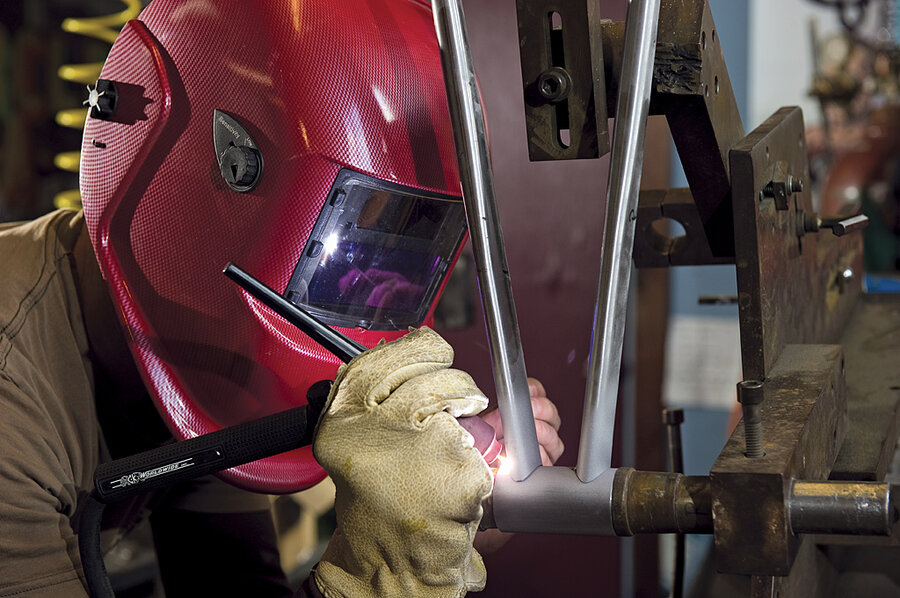It's the 'Bicycle Spring'
Loading...
Primitive tribes that could barely feed themselves put enormous effort into grandeur – monuments, fortifications, catapults – the bigger the better to impress allies and intimidate enemies. Modern nations build aircraft carriers and skyscrapers for the same reason. Humans have a thing about scale. It’s hard to ignore a cathedral, superhighway, jumbo jet, or Cadillac Escalade.
So let’s talk about the opposite. This week’s cover story is about an almost two-century-old contraption that isn’t at all formidable. A bike is thin and frail and awkward looking, even with a Tour de France athlete aboard. It is quintessentially human in scale. It holds one person (two if you are romantic, though I’ve seen four or more riders in developing countries) and converts muscle into locomotion more efficiently than any other vehicle.
For a while in the late 19th century, bikes were the wonders of the age. Pre-automobile Henry Ford rode one. Pre-airplane Wright brothers built them. But for most of the 20th century two-wheelers retreated before the onslaught of increasingly impressive quadricycles. Bikes carved out a niche as kid’s toy, college necessity, and weekend amusement. Cars ruled.
During the mid-1970s, I experimented for a week with the bicycle-only life in Dallas. It was fun but also harrowing, sweaty, and lonely. I was the freak on the streets. Pickup trucks and muscle cars were the norm and didn’t mind letting me know it. By Week 2, sheet-metal armor seemed like a wise move.
That was then. Now riding to and from work has slipped over the line from colorful and a bit odd to normal and, in some workplaces, expected. Vulnerable lone cyclists have grown into solid ranks of riders. What’s behind that? Fresh air, exercise, and, most important, zero emissions. Bikes are greener than a Prius or Tesla. The International Bicycle Fund calculates that an average person on a bicycle can travel three miles on the caloric energy of one egg. A person walking the same distance requires three eggs. A fully loaded bus burns the equivalent of two dozen eggs per person. A train ... well, we’re talking lots of eggs.
As Ron Scherer and a team of Monitor correspondents show (click here) urban planners increasingly see bikes as an integral part of a transportation system. Cities are not just building bike lanes but facilitating bike sharing. The Centre for Advanced Spatial Analysis at University College London has a fascinating interactive map showing bike sharing worldwide (click here -- and a comprehensive map can be found here). While the sheer numbers of urban rental bikes are still only in the hundreds of thousands, there are bike-sharing programs from Taipei, Taiwan, to Fort Worth, Texas.
This is the Bicycle Spring. That is both plaudit and caution. As in other people-power movements, bicyclists have been so long oppressed by cars that they have a well-earned chip on their shoulder. They’ve had to endure lane swervers, door openers, hostile drivers. Every rider dreads potholes, slick roads, and unleashed dogs. Is it any wonder that some cyclists have gone militant? So here’s the caution: Use the newfound strength-in-numbers wisely. A stoplight applies to bikes, too. Weaving in and out of traffic isn’t fair or wise. Sidewalks and crosswalks are for pedestrians, who have their own issues with oppression.
We’ll get the hang of this. Bikes are no longer marginal enjoyments. They are in the mainstream and staying there.
John Yemma is editor of the Monitor. He can be reached at editor@csmonitor.com. This article has been updated to include a link to a more comprehensive map of bicycle sharing programs worldwide.







